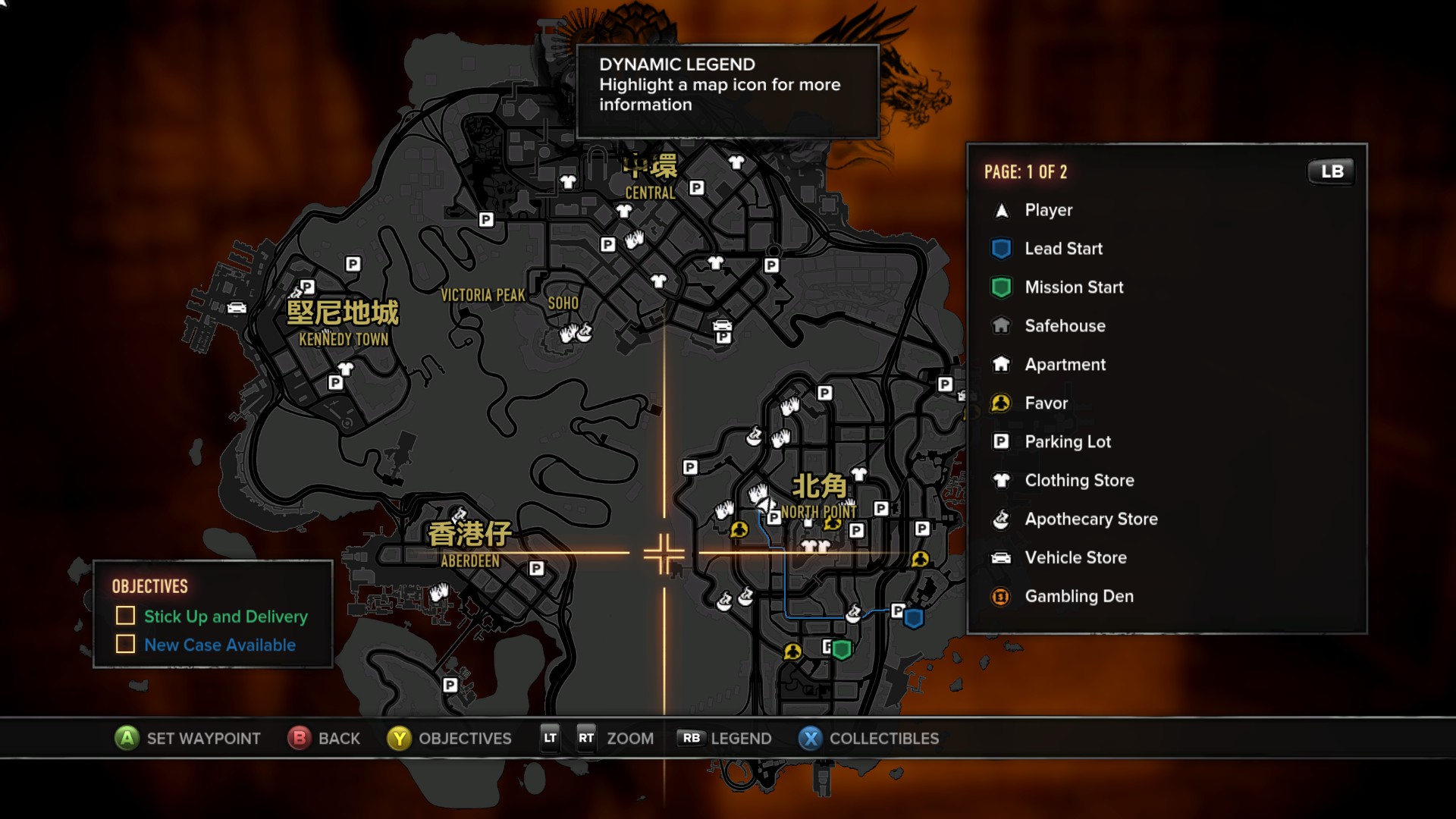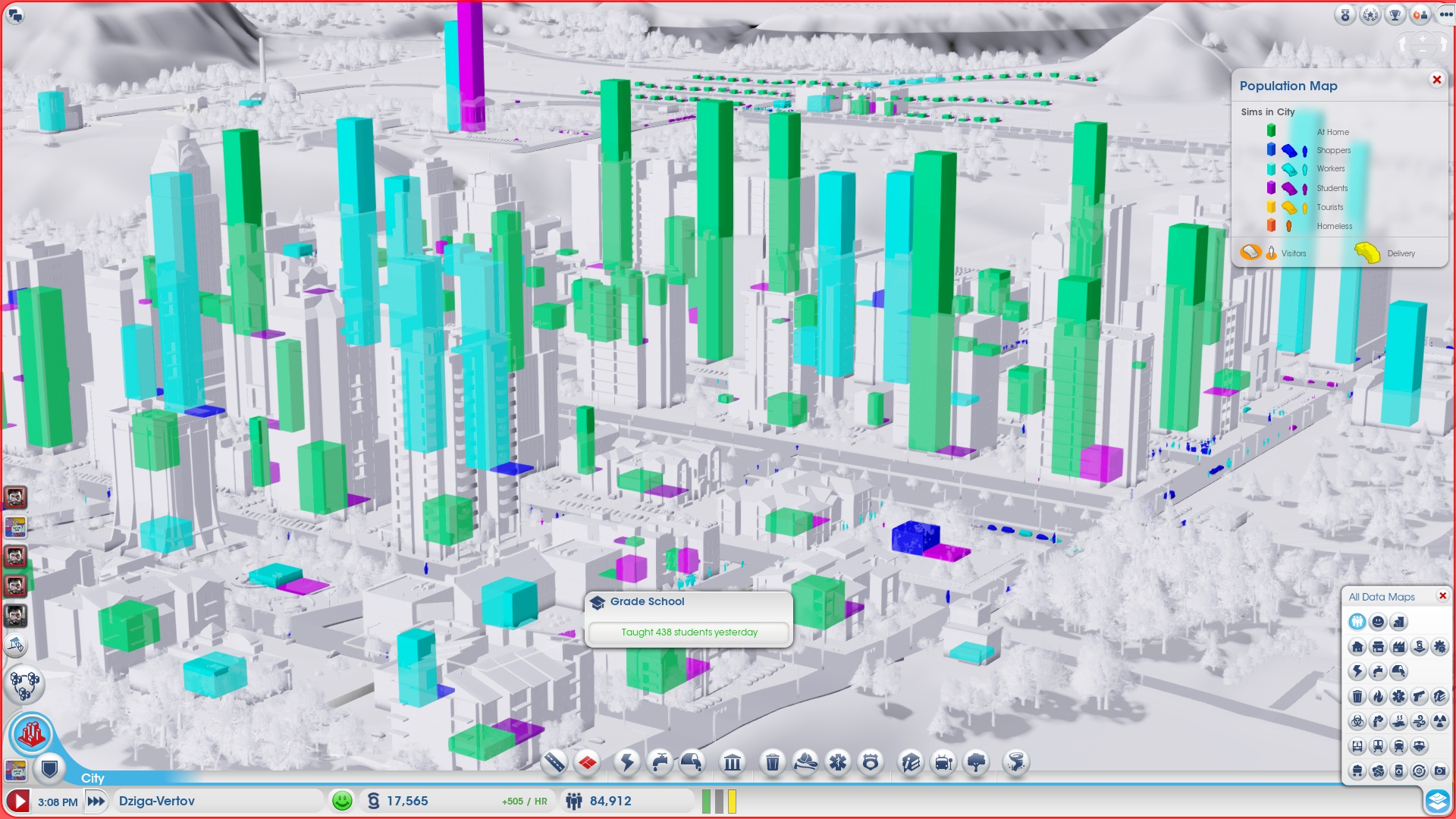Dimensions of the Digital City
By Oscar Moralde
The Grid... a digital frontier. I tried to picture clusters of information as they moved through the computer. What did they look like? Ships? Motorcycles? Were the circuits like freeways?Kevin Flynn, Tron: Legacyi
To speak of video game space is often to speak of urban space; games have digitally recreated cities such as Istanbul (Assassin's Creed: Revelations) and Hong Kong (Sleeping Dogs) for their primary settings, to name but a few examples. These real-world cities are joined by decidedly more imaginary constructs: the flying city-state of Columbia in Bioshock Infinite, or the multitude of personalized metropolises spawned in games like SimCity. All of these digital cities distinguish themselves from urban representations in other media by the fact that often they must not only evoke how a city looks and feels and sounds, but also how that city works. They are born of computer code; of the mathematical representations of rules negotiated by the player. If we consider video games as actions, as Alexander Galloway suggests, then the video game city is a space constructed to facilitate player and computer action.ii
These digital cities never come close to being accurate simulations. The swarming vectors of action and possibility in the city -- what Hannah Arendt describes as the public space that makes "the extraordinary an ordinary occurrence of everyday life" and remedies "the futility of action and speech"iii -- are inevitably reduced to a manageable handful of “gamic” verbs. That reduction process reveals certain ways of seeing the city in terms of its components and functional structure; in abstracting the city and selecting specific elements to model, the design of each game rests on certain assumptions about how a city works, and perhaps how it should work.
What follows is a comparison of two ways that cities are used in games as structuring metaphors: not only as audiovisual constructs evocative of one’s lived experience of the city, but also as frameworks in which gameplay is facilitated and the possibilities of action are delineated for the player. The distinctions here are in the dimensionality of the digital urban space, not in terms of perspective (many of these games use a mobile virtual camera with a model of three-dimensional space) but in terms of the ways that the player is allowed to act within, and upon, the digital urban space.
Three dimensions: the city as theme park
Action-adventure and “open world” games use the cityscape in a myriad of ways: as labyrinth, as battlefield, as racetrack. These types of digital cities tend to present themselves to the player as open spaces negotiated through simulated embodied traversal. In these games, player characters run, jump, drive, and fly through the city in the course of gameplay. But it becomes apparent that this virtual traversal differs from real traversal in crucial ways. Space is warped and distances are distorted; getting from point A to point B feels easier than it would be in real life, and it soon becomes clear that the city is really a collection of “point Bs”. That is, many of the buildings and locations within the city are actually non-navigable, non-operational scenery. If one could walk through walls, the dozens or hundreds of buildings comprising a digital metropolis are actually empty shells, save for the specific ones used in game missions, quests, and activities. Navigating the city then becomes a matter of following paths to those points of interest in a way that resembles the path one takes through a theme park.

Hong Kong as theme park in Sleeping Dogs.
These digital cities are “scripted spaces” in Norman Klein’s sense of the word: they are “designed to emphasize the viewer’s journey—the space between—rather than the gimmicks on the wall. The audience walks into the story… the choices are defined; yet somehow the walk is supposed to feel open.”iv The aesthetics of their designs evoke the design of real or imagined cities, but like the facades and scenic architecture of Disneyland, much of the digital city in this case serves as a decorative flourish to maintain cohesive immersion as the player proceeds from one activity to the next. This theme park traversal is accentuated by the open world genre’s emphasis on modes of transportation and hypermobility; the already destabilized geography of the theme park-city is reconfigured even further by different ways of moving. Driving through the city becomes a different experience when the player is unbound by traffic laws and even the laws of physics. Other games use parkour techniques, grappling hooks, gliders, and other implements that encourage a rethinking of verticality within the urban space, while “fast travel” and teleportation elide the continuity of space and time within the city. These techniques foreground the player’s experience as a “mobilized virtual gaze”, described by Anne Friedberg as “a gaze that travels in an imaginary flânerie through an imaginary elsewhere and an imaginary elsewhen” facilitated by the development of “machines that changed the measure of space and time.”v In examining the amusement park as consumer entertainment, she notes its “parody of urban experience, turning the jumbled subjectivities of urban life into bodily enactments.”vi In the amusement park, modes of transportation and modes of perception are pushed to their extremes; entertainment comes from undermining the stability of the body and its sensory apparatus. That parodic quality survives the transition into the open world game, in which the city-as-theme-park becomes a space for virtual bodily enactment; where the player consumes attractions and experiences.
Two dimensions: the city as puzzle box
Removing the body as the player’s focal point – disembodying the player in the digital city – changes the range of action afforded to the player. Without a body, the impetus shifts from physical traversal and exertion to a more abstract sense of control and management. In a city simulation or “god” game, whose structuring metaphor can be traced to the models and visualizations of urban planning, the player is presented with an overhead view of a city (or space for a potential city) and is given the tools to construct, redesign, and manage that space. These include roads and transportation networks; different types of residential, commercial, industrial, and civic buildings; and political tools such as tariffs, taxation, and ordinances. While the urban denizens of the open world game are either anonymous physical bodies or linguistically and narratively constructed characters, the city simulator treats “citizens” as primarily numerical and statistical abstractions representing economic factors such as labor power, consumers, and taxpayers. Indeed, these digital cities often center on the management of citizens; gameplay consists of fulfilling the citizenry’s Maslovian pyramid of needs such as food, shelter, work, and entertainment. These cities are puzzle boxes in which the player is obliged to craft a framework—a nexus—for the flow of goods, labor, and money.

Visualizing the city as data in SimCity.
Visualizing that nexus necessitates a “flattened” top-down understanding of the city; it requires a way of seeing how all the pieces fit together. Whereas the open world game supplements its three-dimensional traversal with a two-dimensional map for navigation, the city simulation relies on the map view as its primary plane of action, with “street level” visualizations as secondary. The disembodied camera in this situation may possess a hypermobility surpassing that of the most agile open world character, but it is not the conduit by which the player acts; here, action happens at a remove. The player moves a pointer across the map and presses buttons on a visual interface; buildings and roads spring up in the cursor’s wake. The challenge in these games is not one of embodied action, but of logistics: supply chains must be maintained, transport networks must be optimized, and budgets must be balanced, lest the whole system fall into chaos. This gameplay enacts what Timothy W. Luke identifies as a characteristic of the contemporary global city; he notes that:
Global cities now are entirely new built environments tied to several complex layers of technological systems whose logistical grids are knit into other networks for the production, consumption, circulation, and accumulation of commodities. In addition to sewer, water, and street systems cities are embedded in electricity, coal, natural gas, petroleum, and metals markets, in addition to timber, livestock, fish, crop, and land markets. All of this is needed simply to supply food, water, energy, products, and services to residents.vii
That notion of layering, of seeing systematic slices of urban space, finds purchase in the data visualization and “data layers” used in these city simulators; by toggling different options, the player can see overlaid on their map a visual representation of the population’s education level, the crop yields of farms, the congestion at road intersections, or whatever kind of data is deemed important by the simulation. At any rate, with such ways of seeing—treating the city as a puzzle needed to be solved—the city simulator reconfigures, however transiently, the player’s perception of the city from a space comprised of people and structures into what Manuel Castells calls the space of flows, in which the city is enmeshed within “a structure of variable geometry that is enacted and modified by flows of information and electronic circuits and fast, information-based transportation systems.”viii In such a game one learns to see a city of statistics.
Rem Koolhaas’s suggestion that “the Generic City is what is left after large sections of urban life crossed over into cyberspace” can be seen in the myriad Identikit layouts in a game like SimCity, where various urban styles (North American suburbia, British double-decker buses, Haussmann’s Parisian boulevards) sit atop algorithms that perform the same functions regardless of what they look like to the player, and where logistics takes primacy over aesthetics and ethics.ix However, we should be careful not to mistake those encoded assumptions for transparent reality, or to treat the puzzle-box or theme park as the only frames for the digital city. As long as real cities define much of our spatial life, the potential for the digital city to reconfigure perception and attend to qualities of lived experience remains an open horizon, and one worth investigating.
NOTES
- Tron: Legacy, directed by Joseph Kosinski, screenplay by Edward Kitsis and Adam Horowitz (Walt Disney Pictures, 2010).
- Alexander R. Galloway, Gaming: Essays on Algorithmic Culture (Minneapolis, MN: University of Minnesota Press, 2006): 2.
- Hannah Arendt, The Human Condition (Chicago: University of Chicago Press, 1998): 197
- Norman Klein, From Vatican to Vegas: A History of Special Effects (New York: The New Press, 2004):11
- Anne Friedberg, Window Shopping: Cinema and the Postmodern (Berkeley: University of California Press, 1993): 2-3.
- Friedberg, Window Shopping, 90.
- Linda Krause;Patrice Petro. Global Cities: Cinema, Architecture, and Urbanism in a Digital Age (Kindle Location 2013-2015). Kindle Edition.
- Manuel Castells, “Grassrooting the Space of Flows,” Urban Geography 20.4 (16 May-June 30 1999):295.
- Rem Koolhaas, "The Generic City," in S, M, L, XL, by O.M.A., Rem Koolhaas and Bruce Mau, (New York: Monacelli Press, 1995): 1250.

Dimensions of the Digital City by Oscar Moralde is licensed under a Creative Commons Attribution-ShareAlike 3.0 Unported License.

